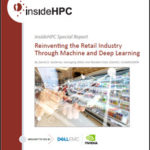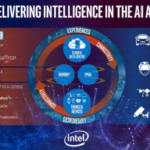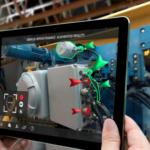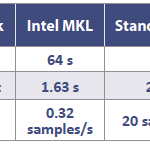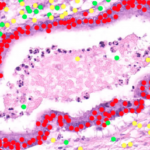These days, taking big data further and integrating machine and deep learning means having a competitive edge in the retail industry. Analytics — and their analysis — have always been a cornerstone of retail success. And now, deep learning techniques are going to push the data boom to the next level. A new insideHPC special report, courtesy of Dell EMC and NVIDIA, explores how the retail industry is being transformed by machine and deep learning.
The 3 Types of Cloud Computing for HPC Systems Management
Three types of clouds have been developed: public clouds, private clouds and hybrid clouds. We continue our insideHPC series of features exploring new resource management solutions for workload convergence, such as Bright Cluster Manager by Bright Computing. This article explores the three types of cloud computing, as well as how cloud computing can work to reduce CAPEX.
Reinventing the Retail Industry Through Machine and Deep Learning
Today, deep learning techniques are poised to disrupt the retail industry. As artificial neural networks become more and more efficient, and as graphics processing units get more and more powerful, so does their influence on retail. Download the new insideHPC special report, courtesy of Dell and NIVIDA, to learn more about how machine and deep learning is revolutionizing the retail industry.
Clusters & Cloud Computing: Speeding up HPC Systems Management
We continue our insideHPC series of features exploring new resource management solutions for workload convergence, such as Bright Cluster Manager by Bright Computing. This article focuses on how clustering servers and utilizing cloud computing can help your enterprise achieve more flexibility and speed — as well as improve HPC systems management.
Successfully Managing Workload Convergence in Your Data Center
Modern enterprises are being challenged to implement new technologies and produce results faster without increasing their IT budgets. This is the first a series of features exploring new resource management solutions for workload convergence, such as Bright Cluster Manager by Bright Computing.
AI Hardware to Support the Artificial Intelligence Software Ecosystem
Balance ratios are key to understanding the plethora of AI hardware solutions that are being developed or are soon to become available. This post from an insideHPC Special Report explores AI hardware options to support the growing artificial intelligence software ecosystem.
Top 10 HPC White Papers for 2017: Machine Learning, AI, the Cloud & More
Many of the top 10 2017 HPC white papers deal with the next steps in the HPC journey, including moving to the cloud, and discovering the potential of machine learning and AI. The most downloaded reports of the year were written with industry partners such as Red Hat, Dell EMC, Intel, HPE and more.
AI Software: Understanding the Rapidly Expanding Ecosystem
The hardware and software for AI devices is rapidly evolving, so it is important to procure wisely for the future without incurring technology or vendor lock in. This post from an insideHPC Special Report focuses on AI software and how to best use and understand this rapidly expanding ecosystem.
AI Systems Designed to Learn in a Limited Information Environment
In a special report, Intel offers details on use cases that explore AI systems and those designed to learn in a limited information environment. “AI systems that can compete against and beat humans in limited information games have great potential, because so many activities between humans happen in the context of limited information such as financial trading and negotiations and even the much simpler task of buying a home.”
AI Technology: The Answer to Diffusion Compartment Imaging Challenges
Use cases show AI technology, like what’s used in an optimized Diffusion Compartment Imaging (DCI) technique, is growing the potential of HPC computing. AI is thought to be a solution to many of DCI’s challenges. “A complete Diffusion Compartment Imaging study can now be completed in 16 minutes on a workstation, which means Diffusion Compartment Imaging can now be used in emergency situations, in a clinical setting, and to evaluate the efficacy of treatment. Even better, higher resolution images can be produced because the optimized code scales.”

